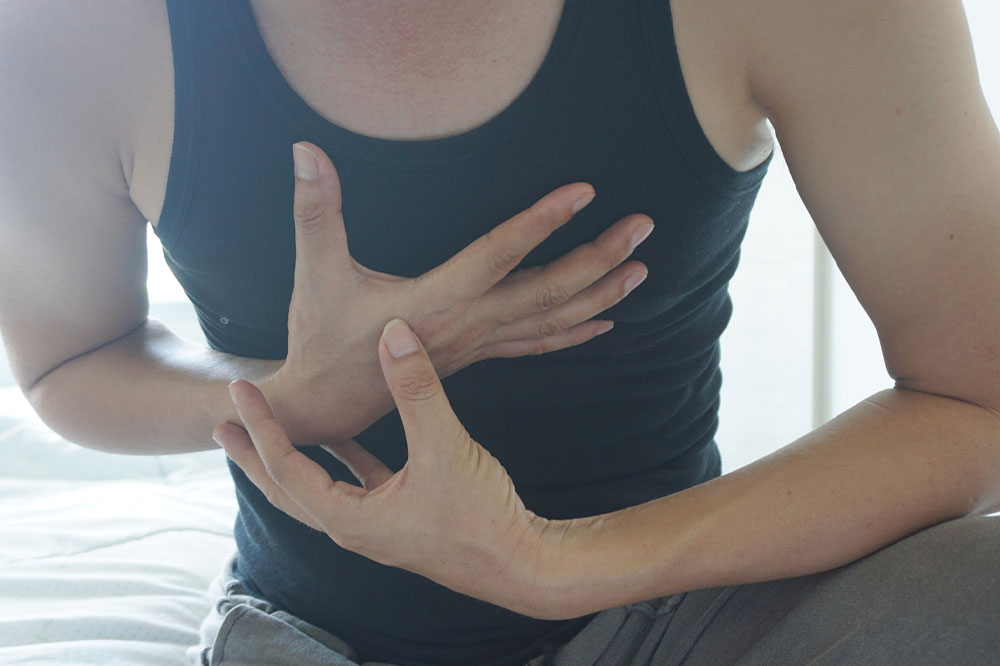
7 common signs of poor blood circulation
Poor blood circulation is triggered by a disruption in the circulatory system, such as blocked blood vessels and problems in the valves. This can affect how organs receive blood. Further, poor circulation can lead to an inadequate supply of nutrients and oxygen carried by the blood. In most cases, the farthest body parts, like the hands and feet, are most affected. Poor circulation could result from health conditions like heart problems, diabetes, and arterial issues.
Signs
Here are a few common signs of poor blood circulation:
Muscle cramps
Cramps usually develop in the legs and can worsen while walking when dealing with poor circulation. This happens because the body is unable to carry enough oxygenated blood to the legs. Those experiencing this sign of poor blood circulation may notice that the cramps can be felt in the calves, thighs, or buttocks. One of the major reasons for the symptom could be “claudication,” where the arteries become narrowed due to plaque buildup along their walls. If one experiences this symptom, they must seek medical attention.
Swelling
Poor blood circulation can also result in the formation of blood clots, leading to swelling in the affected areas. The swelling develops when a blood clot blocks the flow of blood and causes it to build up behind the clot. In most cases, this swelling can be observed in the lower leg, but some may also experience it in other parts of the body, such as the arms and stomach. This swelling can also be accompanied by pain and damage to the blood vessels. While considering treatment to relieve swelling, one must remember that they may continue to experience swelling even after a clot has been removed.
Numbness and tingling sensation
One of the most common signs of poor blood circulation is experiencing numbness and a tingling sensation in the hands and feet. This could be a result of a condition known as Raynaud’s disease, which causes attacks of restricted blood flow. Here, most people experience the sensation of pinpricks or numbness till the blood starts to return to the affected area.
Sores
When a part of the body does not receive the required amount of blood, oxygen, and nutrients, one may notice the development of ulcers or sores on the skin. These sores may take a lot of time to heal due to insufficient blood supply, resulting in infections and further complications. If one experiences this sign of poor blood circulation, they must consult a healthcare professional at the earliest to get the necessary treatment.
Cognitive issues
Blood circulation is imperative for maintaining the function of various organs, including the brain. Further, the brain plays a huge role in controlling various functions such as involuntary breathing, memory, ability to speak, walk, and think. If the brain does not get the amount of blood it needs, it can experience issues like memory loss, difficulty concentrating, and even cognitive issues, which can affect daily activities, work, and relationships.
Skin discoloration
One of the common signs of poor blood circulation is discoloration of the skin. Here, insufficient blood supply can cause the skin in the toes, fingers, and nails to turn blue. This is called cyanosis and develops when the affected body part receives too little oxygen. However, health conditions such as diabetes can also cause changes in the skin color. So, when one notices slight changes in skin color, they should consult a doctor to help confirm the issue and get the appropriate treatment.
Brittle nails
Weak nails are one of the most overlooked signs of poor blood circulation. Usually, fingernails and toenails tend to grow quickly and regenerate continuously. However, when dealing with poor blood circulation, the nails do not get sufficient oxygen and nutrients. This results in weak nails that can break easily.
Usually, the treatment plan for problems with the circulatory system depends on the underlying cause. However, one can consider trying compression stockings to relieve any pain or discomfort. Additionally, one may also benefit from regular exercise, as it can help improve the circulation of blood. Nevertheless, one should consult a doctor as soon as they notice one or more of the abovementioned signs to get appropriate treatment and an early diagnosis.


